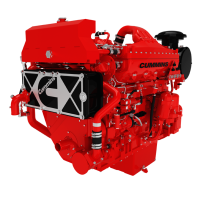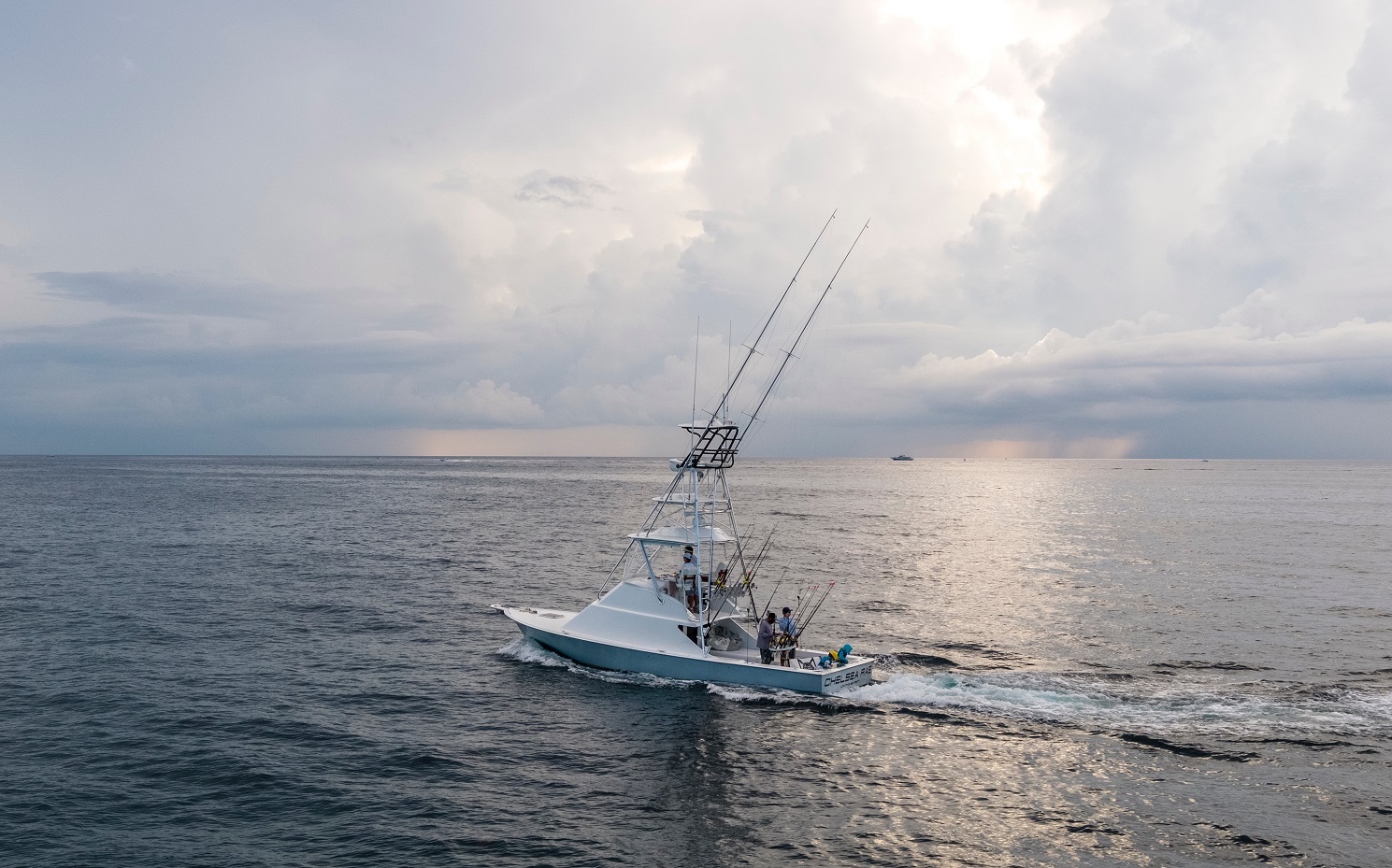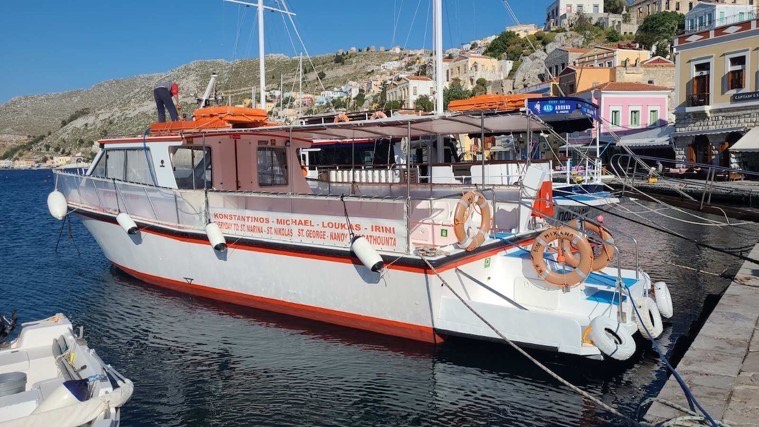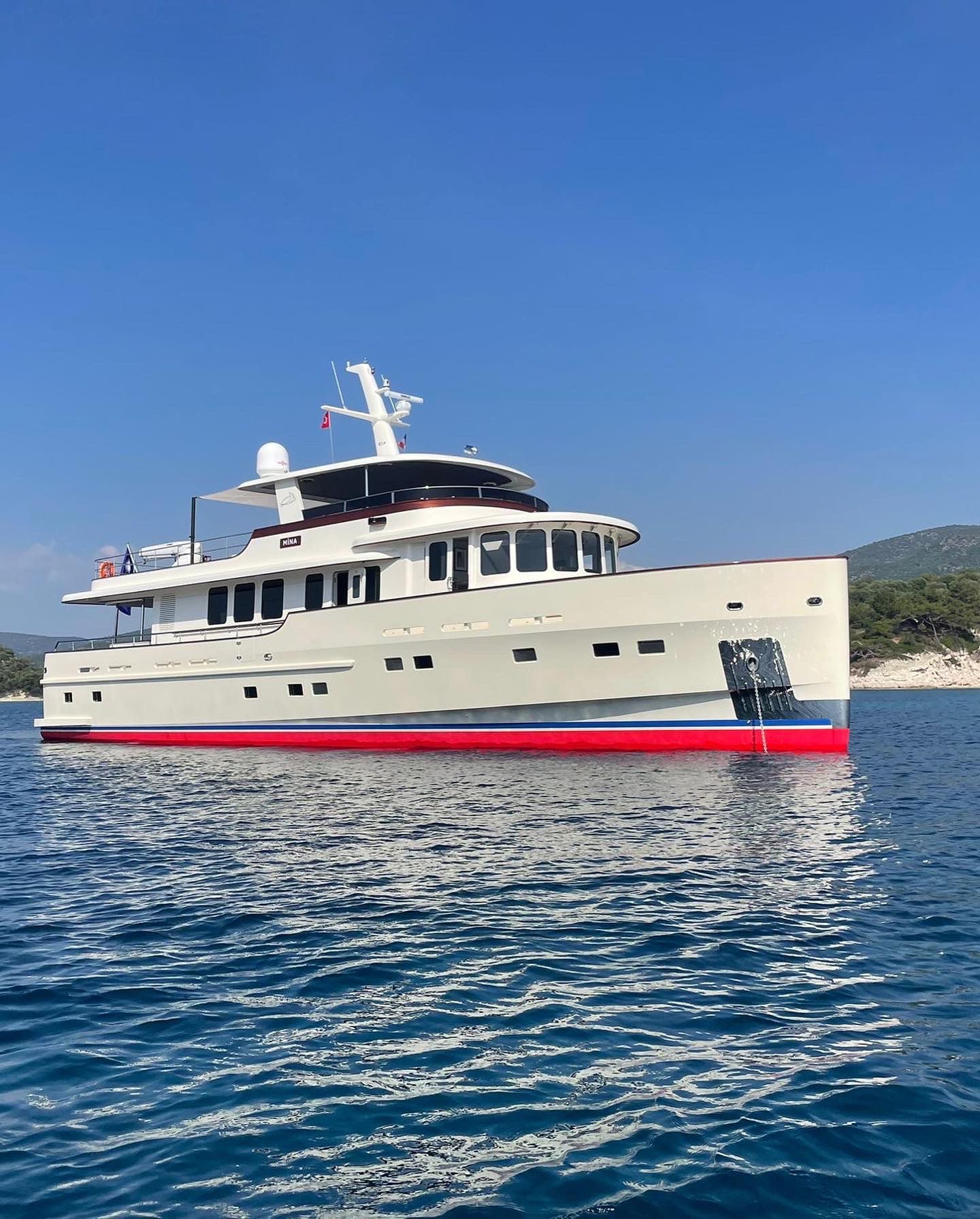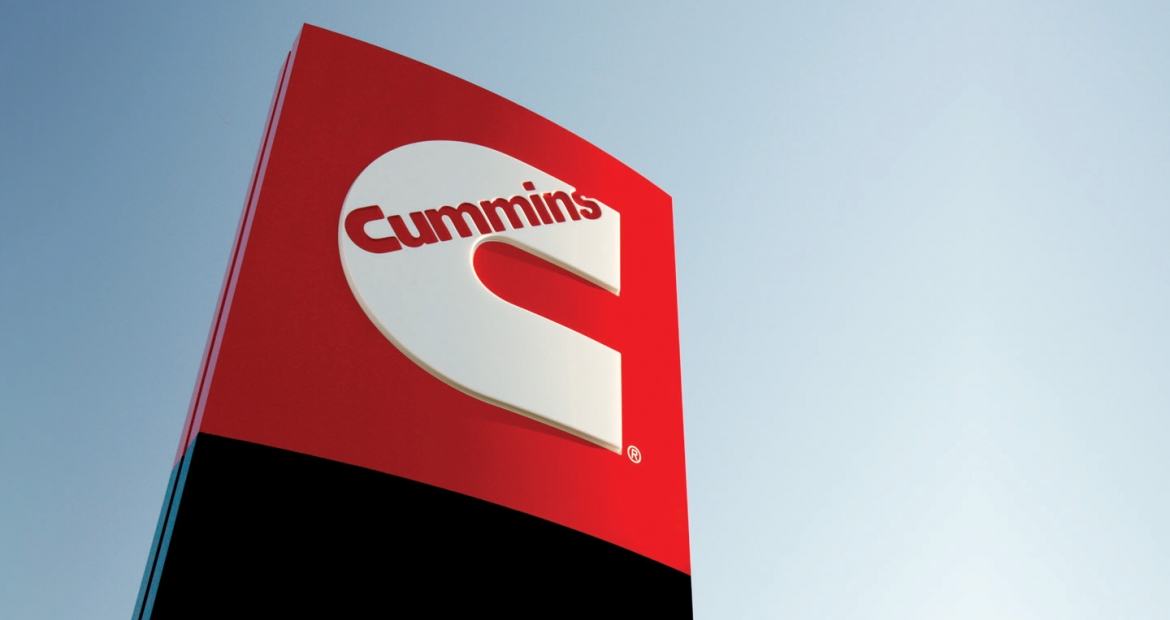
Cummins Vessel Reference #656
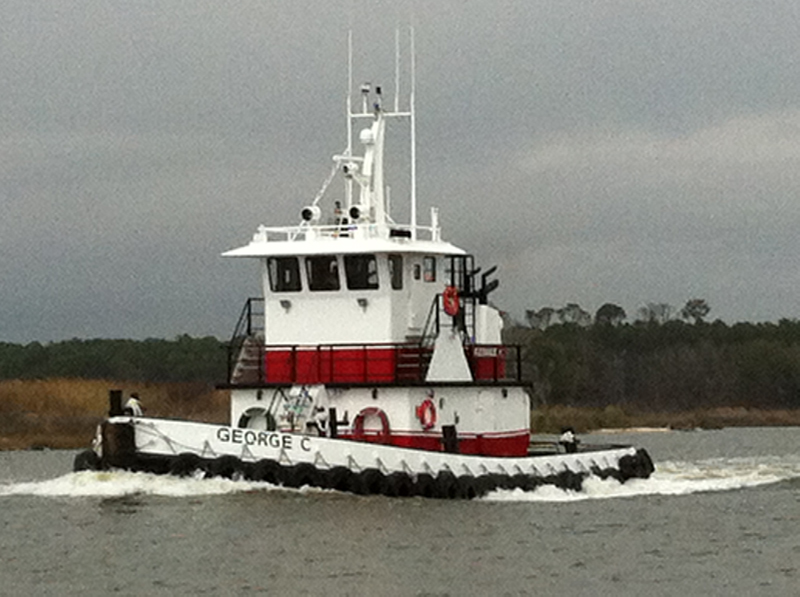
The marine press has been giving extensive coverage to the oil industry’s ongoing quest for off-shore resources. But the near shore wells along the Gulf of Mexico coast continue to make a significant contribution to US oil production.
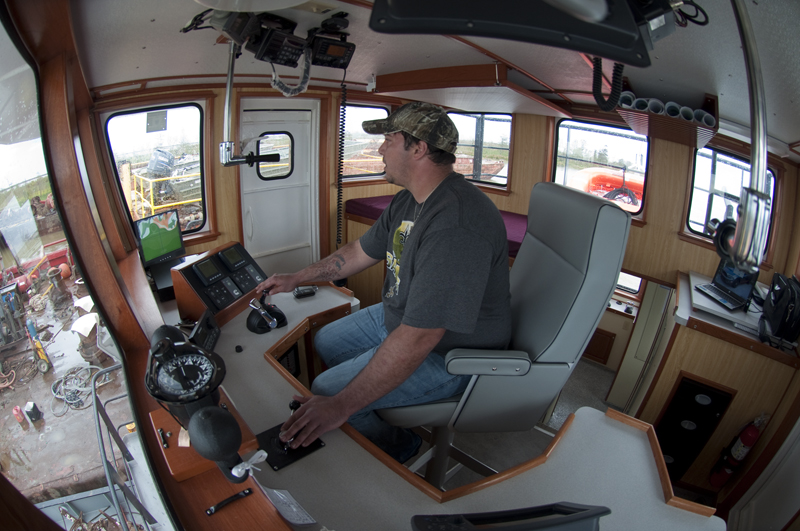
Meeting the logistical needs of these production wells requires versatile, shallow draft vessels. With knowledgeable crews the boats find their way through the myriad of small bays and passes that make up the margins of the Gulf. Evolving from inshore fishing boats, the lugger tugs, with their aft wheelhouse, open foredeck and capable of working in less than seven feet of water, have filled this specialized niche.
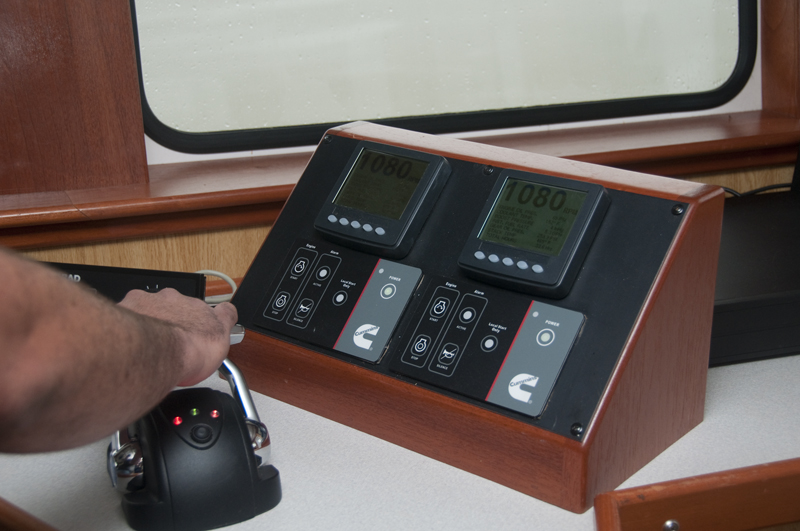
When the Offshore Horizon disaster left Stan Cvitanovic’s Cvitanovic Boat Services without any work, he sold his three lugger tugs and decided to take life easy. He had done little but work since arriving from Croatia as a teenager in 1971 when he shucked oysters when not going to school. But Stan is not one to stay idle for long. When he could see that there was going to be need for inshore boats again, he went to the builder of his earlier lugger tugs to order some new vessels.

Joey Rodriguez, of Rodriguez Boat Builders in Bayou LaBatre opened a design file on his computer and, making changes requested by Stan, presented a design and a price. The two men have the kind of relation that gets business done in the Gulf States and soon Joey was cutting steel. That first new boat, the Pere C, launched and, with a pair of Tier II compliant Cummins QSK19 mains, went to work in 2011.
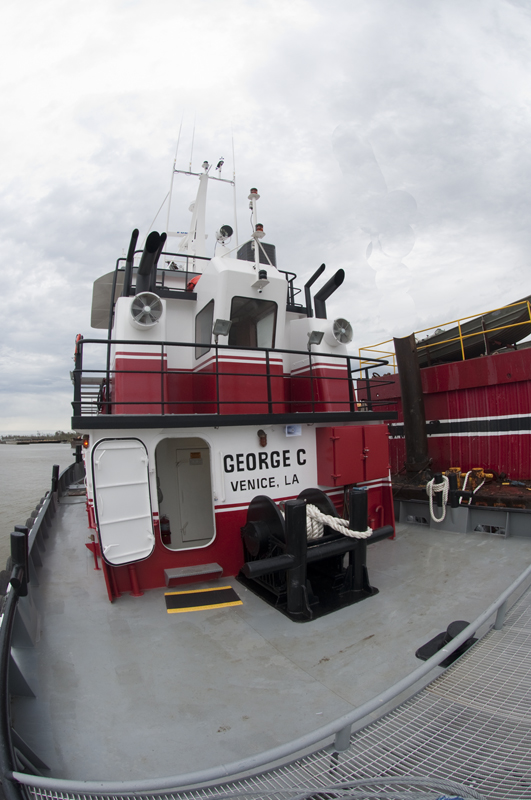
Rodriguez already had the keel laid for Cvitanovic’s second Lugger tug. Delivered in March of 2012, the George C has the same 67.5 x 26-foot hull as the Pere C. The boat also has the same six-cylinder QSK19 main engines. The newer vessel’s engines are rated at 500 HP while the Pere C is taking 660 HP each out of the same engines. There were also some changes to the deckhouse. The Pere C was built with a full three decks for extra accommodation and to give the wheelhouse a 32-foot eye level for seeing over high barges in the pushing mode. The lower pilothouse on the George C also means that it is easier to operate with a crew of two as the skipper has quick and easy access to the forward cargo deck.

Selling his older vessels and building new ones when he did also allowed Stan to include the provision of the new US Coast Guard Sub-chapter M for towing vessels. On the morning of March 9, 2012 the crews of the Pere C and the George C were busy scrubbing down the boats from the upper decks to the engine room. The Pere C usually operates with a crew of three; two captains and a deckhand. When a call came in for a boat to do a relatively short freight run, it was decided that the George C could do the job.
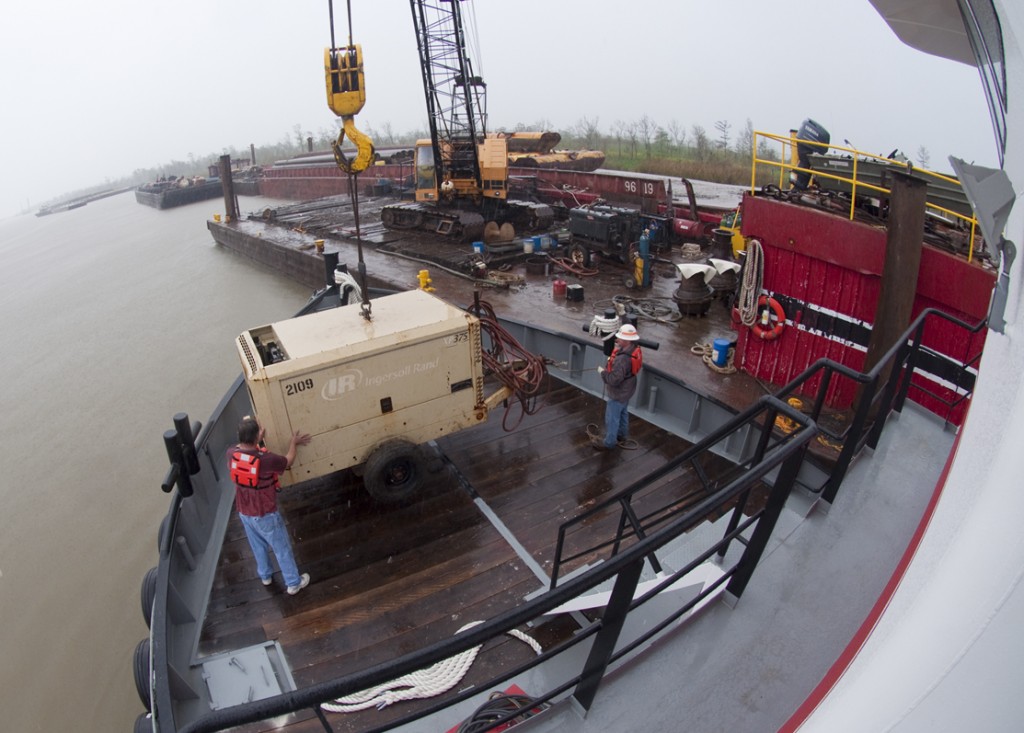
Ken Helmer, who usually shares the captains duties with Gary Duncan on the Pere C, joined his son George Clement on the George C. If both boats had been called out, they would have called Stan Cvitanovic to come down to the boat from his home just an hour by car up river from their moorings at the Venice Marina. Venice is the end of the road down beside the Mississippi and it is just about ten miles from the Head-of-the-Passes that marks the official end of the river.

Leaving the moorage, George ran the boat up Tiger Pass and then down Grand Pass less than a half mile. Two or three barges were moored to the bank with various pieces of dredge equipment stored on deck. A crane on the barge loaded a compressor and a rack of welding tanks onto the wood shielded bow of the tug. The boat then ran up to a pier with road access where the welding tanks were off loaded. Then it was back down to the barges. Making up to the crane barge with the use of face wires and deck winches mounted just ahead of the main cabin, the George C moved the crane into position alongside one of the barges with a number of heavy anchors on-board.
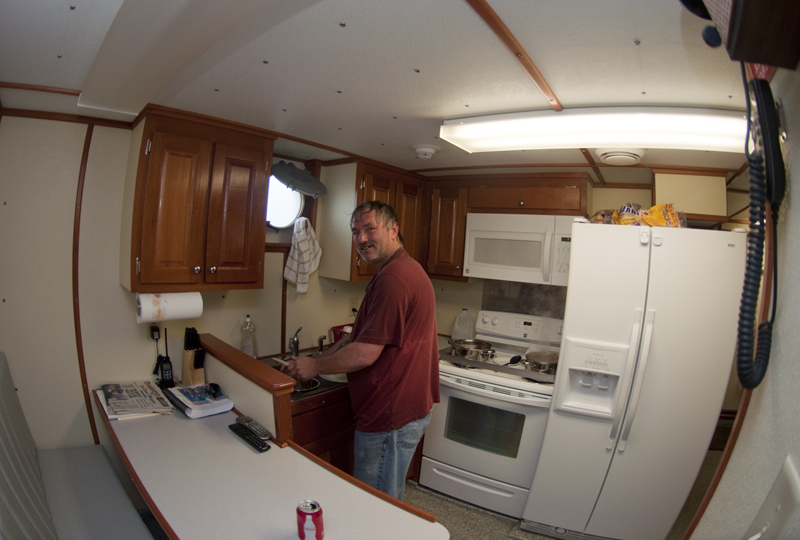
The visibility from the wheelhouse, as Ken made up the face wires to the barge then signaled for George to take up the slack with the wheelhouse controls, showed just how safe this boat is for a two man operation. Similarly when the crane was lowering the heavy anchors into place alongside the compressor the forward deck was always clearly visible from the wheelhouse. For towing a big Pullmaster single drum hydraulic winch on the stern (30,000 pound recovery and 100,000 pound brake) is used, When this is being set up to tow, an indoor aft control station is just a couple of steps down from the main wheelhouse. Safety on the two-man boat is further enhanced by a set of close circuit TV cameras covering all the vessel’s crucial areas.
Each of the boats has capacity for 16,000 gallons of fuel in four tanks and 24,000 gallons of fuel in five tanks. Dedicated pumps, with controls on deck, allow for transfer of both fuel and water to the rig. By adjusting the fuel and water cargo, Cvitanovic explains that it is possible to carry up to 30 tons of cargo on deck.
With several tons of compressor and anchors loaded on the foredeck the George C ran back up Grand Pass and out into the main stem of the Mississippi. Pushed along by a couple of knots of river current the boat was making 11.4 knots going down river past Pilot Town and into Southwest Pass. A few miles short of the actual Gulf of Mexico a cutter suction dredge was working. With the boat moored alongside, crew from the dredge came aboard and lifted the cargo off the bow with the barge-crane. They worked under the watchful eyes of George and Ken making sure that nothing was banged up on the brand new boat. With the cargo delivered it was back out into the Mississippi currents to buck back up river at 7.1 knots for a serviceable average speed of about 9 knots.
Secured back in the Venice Marina just after dark, the crew settled into the galley for dinner and talk. At his home in Belle Chasse Stan Cvitanovic explained the business challenges of operating lugger tugs. Ideally one gets a charter to tend a rig with one tug and keeps the other available for the more lucrative spot market. He has a third tug, a sister-ship to the George C, building at Rodriguez with the same Cummins QSK19 power turning into Twin Disc MG516 gears. He will use he same 500 HP rating, as there are significant fuel savings of about 15 gallons per hour and little difference in the vessel speed.
In the years since he left Croatia, Stan Cvitanovic has built and sold a number of lugger-type tugs. He has been consistent in his use of Cummins engines, “They are heavily built and so they are stronger,” he says.
For further information:
Stan CvitanovicP.O. Box 209
Empire, LA 70050
Phone: 504 392 9515
Mobile: 504 460 8165
E-mail: cvitanovicboats@yahoo.com
April Rodriguez Harrel
Rodriguez Boat Builders
14843 Alba Ave.
Coden, Alabama 36523
Phone: 251 824 4067
E-mail: aprilhmbl@yahoo.com
Larry Neff
Cummins Mid-South Inc.
1924 E I-65 Rd. N
Mobile AL 36617
USA
Phone: 251 895 1590
E-mail: larry.e.neff@cummins.com
Trophy fish are measured by weight and length at the dock. They almost always exceed the size of the angler reeling them in. The exception would be M/V Chelsea ...
Greek passenger vessel repowers with Cummins. Cruising to Symi on a water taxi is more than a boat ride across the Aegean Sea. Departing the eastern sh...
Crews with no choice but to head out to sea in rough weather conditions rely on trawlers' inherently robust, stout design based on the DNA of highly capable fis...
